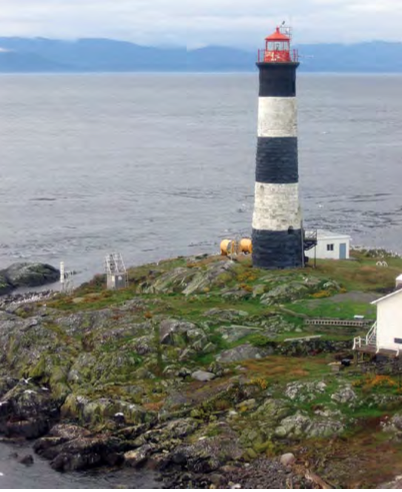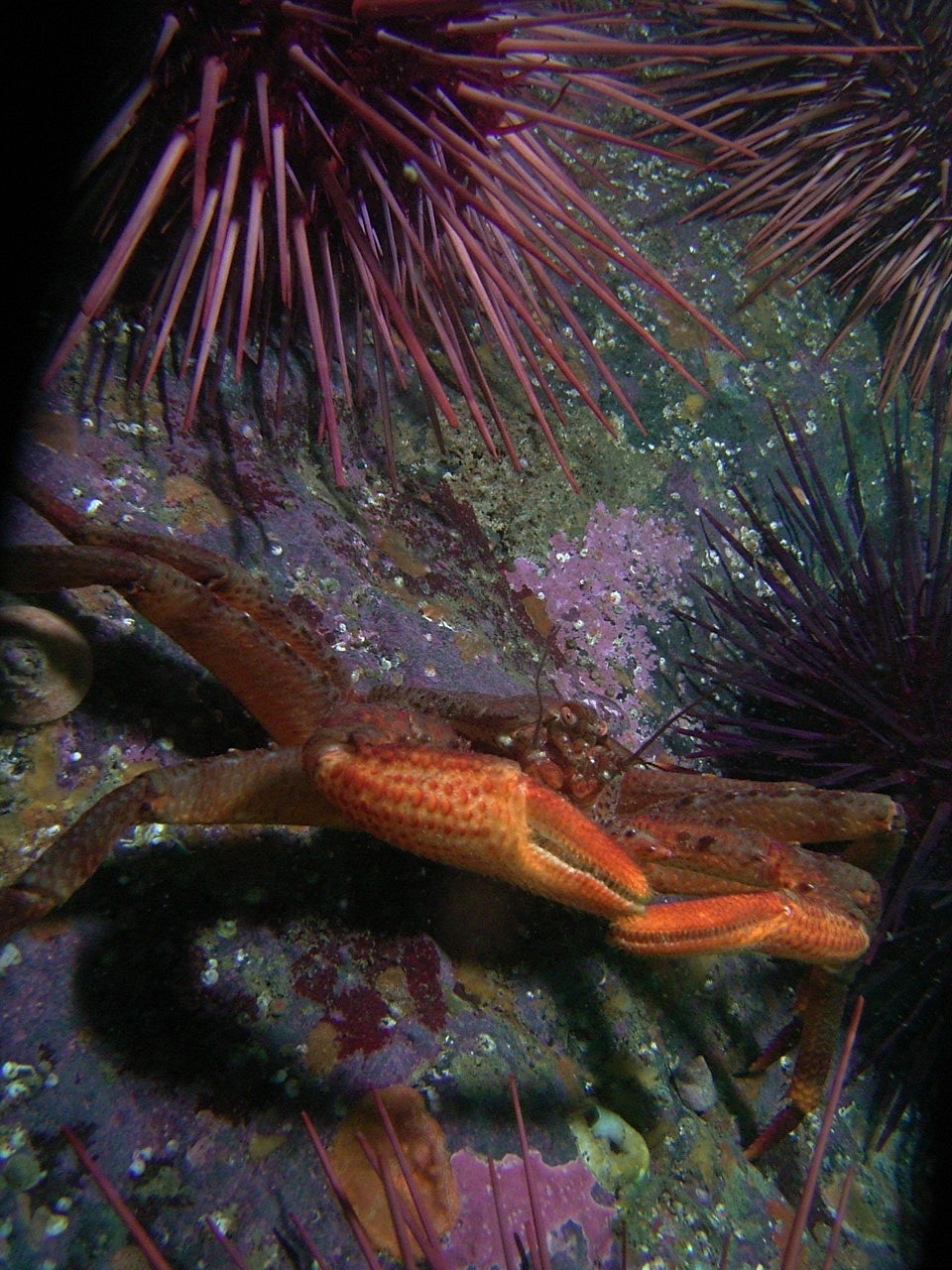This document was prepared two years before DFO actually did the upgrading of the light tower. The following quotes on the historic significance is worth noting.
The Race Rocks tower is located on Great Race Island, a small and barren rock outcrop in the Strait of Juan de Fuca, about fifteen kilometres south of Victoria, British Columbia. Erected in 1860, simultaneously as Fisgard light, with which it was designed to function, the Race Rocks light tower is British Columbia’s second oldest operating lighthouse and a forerunner of the extensive system of navigational aids built during the following century along Canada’s West Coast.
Construction of both the Fisgard and Race Rocks towers was undertaken in 1859, at the initiative of colonial officials and with partial financial and technical support of the Imperial Government. The latter provided its expertise, the lighting apparatus, which according to the local legend, would have travelled from England with Fisgard’s first light keeper, and 7000 pounds in funding, half as a grant, half as a loan. The colonial government oversaw the selection of the site and the construction following a plan of combined tower and dwelling, attributed to both JohnWright of London and to the Surveyor General of British Columbia, Joseph Pemberton.1
“Race Rocks light tower is “the only known example of tall, pre-Confederation, unsheathed stone masonry tower, built outside of Ontario”.2 Along with towers of a similar design on the Great Lakes, it shares the classification of “Imperial” tower, a reference to its typology as a tall, tapered, circular, pitched-faced stone structure, rather than to the British involvement in its construction. Unlike the Imperial towers of Ontario, however, the interior configuration of the Race Rocks lighthouse was based on its being attached to the keeper’s residence, and consists of a continuous stone spiral staircase rather than of superposed wooden floors linked by ladders.
The light at Race Rocks was lit on December 26, 1860, a month after that of the Fisgard tower. Until the construction of the landfall light at Carmanah Point in 1891, it was considered the most important lighthouse in British Columbia. It was attended to by a long succession of light keepers and their families, who lived in the attached stone residence until the construction of new dwellings in 1964, closely followed by the demolition of the original house in 1967.”
EXECUTIVE SUMMARY Background
 The Heritage Conservation Network (HCN) project team has completed the condition assessment and report for the Race Rocks Lighthouse located on Great Race Island in the Juan de Fuca Strait, south of Victoria, British Columbia, as part of the project for eighteen lighthouses for the Department of Fisheries and Oceans (DFO). The report contains structural and building envelope conditions, analysis of these conditions, recommendations and indicative cost estimates for mandatory and cyclical conservation work both in the short and the long term.
The Heritage Conservation Network (HCN) project team has completed the condition assessment and report for the Race Rocks Lighthouse located on Great Race Island in the Juan de Fuca Strait, south of Victoria, British Columbia, as part of the project for eighteen lighthouses for the Department of Fisheries and Oceans (DFO). The report contains structural and building envelope conditions, analysis of these conditions, recommendations and indicative cost estimates for mandatory and cyclical conservation work both in the short and the long term.
See the Full PDF at :Condition Assessment
Conservation Approach
This condition assessment, report and related recommendations, follow the conservation approach of minimal intervention and least harm to preserve/protect heritage character. This approach will help provide DFO with information required to properly manage the Race Rocks lighthouse while ensuring that the building is safe in terms of both public and staff and that the existing heritage fabric will be protected and maintained.
Description
The Race Rocks Lighthouse is a pitched-face stone structure with a round, tapered shaft, painted with a series of horizontal black and white painted stripes. The tower corbels at the top forming a gallery around the cast iron lantern, which rises approximately 32 meters (105′-0″) tall from grade, and tapers from a diameter of approximately 5.8 meters at its base to 3.8 meters at its narrowest point below the gallery. The tower is accessible through a curved metalic stair and arched door opening, located 3.20 meters (10’6″) above grade. It is pierced with 4 window openings, the two lowest of which are arched and the top two, rectangular. The cast iron octagonal lantern, which sits atop the concrete parapet, can be reached by a continuous stone spiral staircase, which terminates just below it.
Heritage Value
The Race Rocks Lighthouse is a Recognized federal heritage building (FHBRO log number 90-85). It obtained a total score of 62, based on a score of 14 for historical associations, 23 for architecture, and 25 for environment. A review of the related Heritage Character Statement is provided in the report to help the lighthouse custodians identify and protect heritage fabric and aid in guiding future maintenance and repair interventions so as to maintain the lighthouse’s heritage value. This section identifies all of the elements of the lighthouse that are important in defining the overall heritage values that require protection. Its character-defining elements reside in its robust stonework construction consisting of large rusticated blocks with limited decorative detailing, typical of “Imperial” lighthouse design, in its black and white day marking and in the interior spiral stone stairway. Other buildings on the islands are considered to contribute to the heritage character of the tower’s environment, but were not investigated for this report.
 The Race Rocks taxonomy is a collaborative venture originally started with the Biology and Environmental Systems students of Lester Pearson College UWC. It now also has contributions added by Faculty, Staff, Volunteers and Observers on the remote control webcams.
The Race Rocks taxonomy is a collaborative venture originally started with the Biology and Environmental Systems students of Lester Pearson College UWC. It now also has contributions added by Faculty, Staff, Volunteers and Observers on the remote control webcams.


